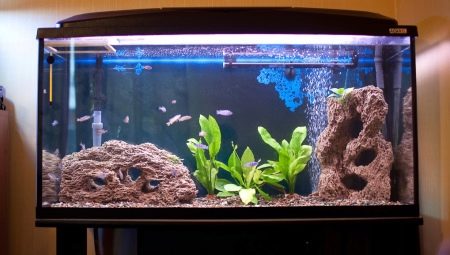A 200-liter large-sized aquarium will enliven the interior of any spacious room. But before you bring such a bulky design into the house, it is worth learning about the features of the choice, installation and equipment of the future water area. Yes, and you need to populate it wisely. In this article, we consider in more detail the characteristics of such a capacity, and also get acquainted with the nuances of its operation.

Advantages and disadvantages
The main advantage of the 200 liter aquarium is ease of maintenance. It quickly adjusts the bio-balance, and the inhabitants are not constrained.
By the way, a large volume of water allows you to hold large fish.
but Before buying a 200-liter aquarium, you should decide in advance where such a tank will be. After all, it should not interfere with household members, and fish can not suffer from extraneous noise, bright sunlight and heat sources.
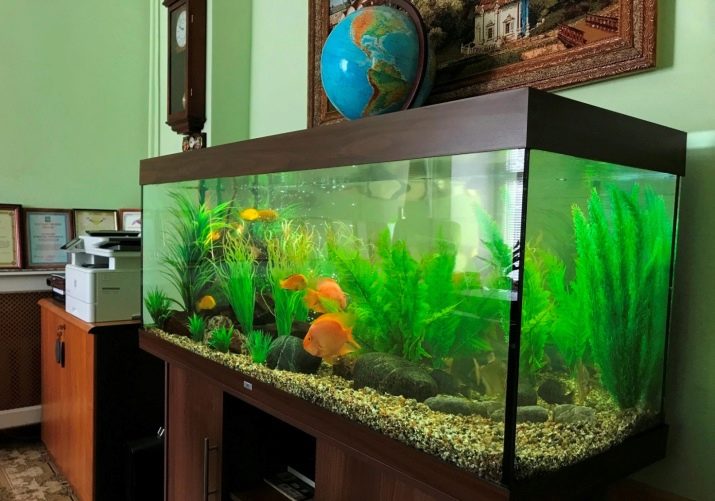
Another important point: such a spacious pond is installed on a stable cabinet so that the corners of the aquarium do not go beyond the upper surface.
Large aquariums are not placed on a regular table, because their weight exceeds 200 kg. Today, in stores, 100 and 200 liter aquariums come immediately complete with a pedestal. On the one hand, this saves time searching for the right stand, on the other hand, the cost of some sets flies a pretty penny.
If the obvious flaws do not bother you, you should proceed to the next step: choosing the shape and size of your future home water area.
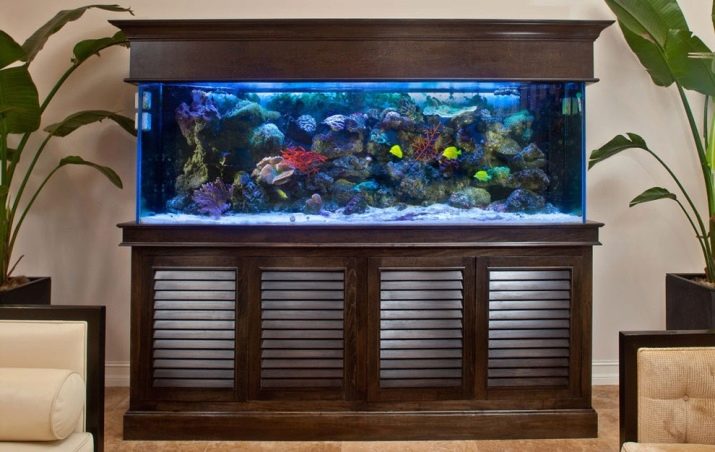
Shape and size options
The most affordable and convenient option for a city apartment is a standard rectangular aquarium with parameters of 1000 mm in length, 370 in width and 550 in height.The thickness of the glasses is 8 mm, the area of the side surfaces is 354x550, and the front ones are 1000x550.
Without water, an empty aquarium weighs about 18-20.5 kg, but shipping requires the help of a delivery service. Together with water, the weight will increase significantly. It is not difficult to calculate it: the volume of water translated in kilograms, plus the weight of the glass, plus soil and the necessary equipment.
Based on this, it is worth not only choosing a reliable stand, but also thinking about the reliability of beam ceilings. The latter is especially true for old buildings, which are unlikely to be designed for a load of more than 200 kg.

If the reliability of the building is not in doubt, you need to think about the shape of the future water area. In addition to the standard rectangle, today there is a large selection of angular, wall and panoramic aquariums made of silicate and polymer glass.
The former significantly save space, but since they are installed at the joints, it can be difficult to determine the area of leakage of the aquarium. A wall-mounted aquarium is also economical, it also looks stylish, but it is very difficult to care for the inhabitants of such a tank. The panoramic version of the aquarium looks original due to concave glass, but this format distorts the natural size and is demanding on lighting. A more successful option is the trapezoidal shape, which also provides excellent visibility, but without significant distortion.
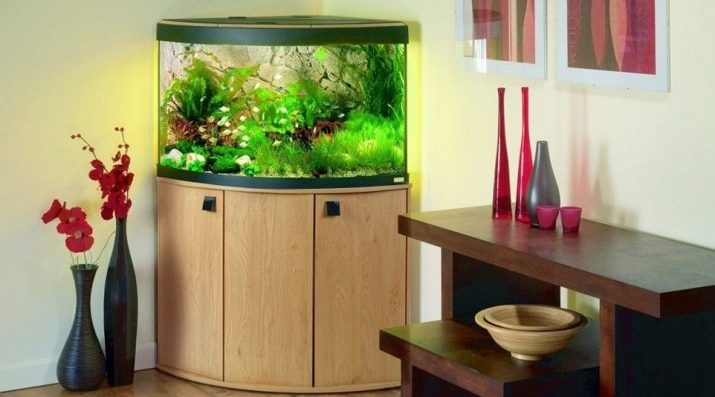
A new-fashioned trend was the emergence of a screen aquarium, which allows you to zone the room. Its inhabitants are visible from all sides, and the turbidity of the water is not so noticeable.
However, in such aquariums, fish often suffer from a lack of oxygen, so these designs need to be equipped with an additional set of filters.
If the delights are not too interesting, you should pay attention to ordinary rectangular containers with a curbstone. After the desired shape is selected, you can proceed directly to the purchase of an aquarium.

How to choose?
To pick up a quality container, It is worth considering the following recommendations.
- Do not sign any documents until a thorough inspection of the aquarium.
- Inspect the container for scratches or cracks. The former will be annoying already at the launch stage, while the latter may cause the collapse of the aquarium wall and the death of its inhabitants.
- The seams should be smooth, without dips and bumps. There should be no sealant marks on the walls of the aquarium.
- The tank cannot contain chips and scuffs, and its ends must be polished.
- Stiffening ribs - glass strips up to 5 cm wide, glued perpendicular to the walls of the aquarium will be mandatory.
When buying an aquarium in a pet store, a warranty card is provided to the buyer. If you plan to buy a container with your hands, you should pay attention to the price already at the selection stage: too budget option should raise questions about the quality of the aquarium.
If the seller refuses to share information about the status of the tank, you need to look for a more adequate consultant. At a personal meeting, you should make sure that the future fish house is in perfect order, and the equipment (if attached) is in good condition.
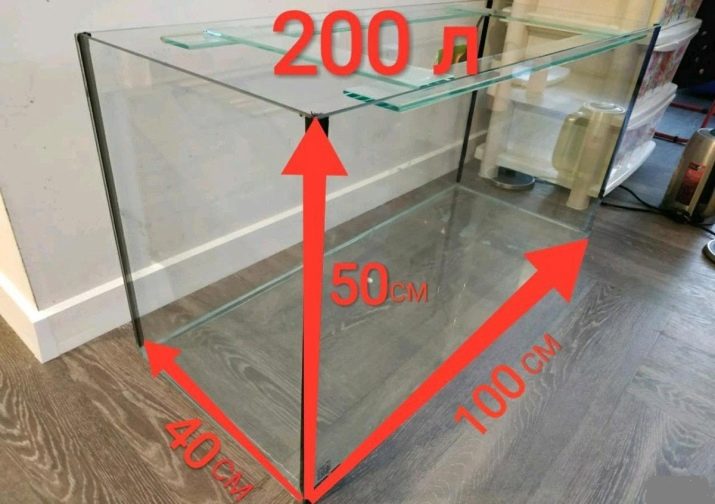
How to equip?
It is no coincidence that the equipment was mentioned: right after buying an aquarium, you need to select the necessary devices that will support life in the home. The arrangement of an aquarium of 200 liters is not much different from the capacity of smaller sizes.
He also needs a heater, filter, compressor and siphon. Filters can be external, internal, built-in and mounted. If the choice fell on filters without aeration, the purchase of a compressor is simply a must. Particular attention should be paid to lighting. It is no coincidence that aquariums are immediately sold with a lid or this necessary attribute is purchased separately. After all, it is on the inside of the cover that LED lamps or LED spotlights are installed.
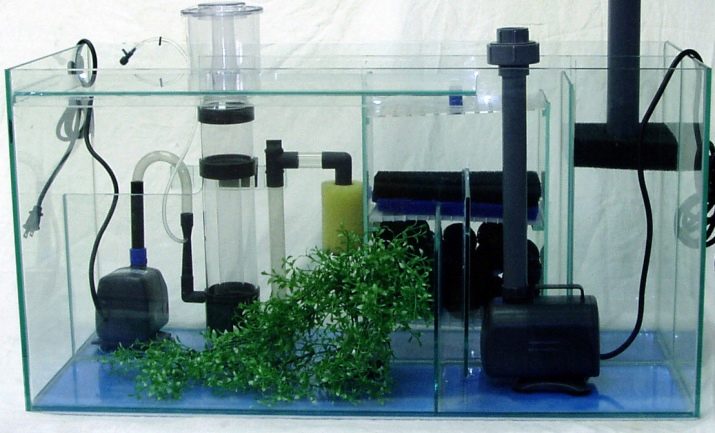
These light sources have gained great popularity due to their quiet operation, long life and low power consumption. It is important that with prolonged use (over 50 thousand hours) the spectrum of the emitted light does not change. LED spotlights are resistant to mechanical damage, increased water resistance and safety, since they do not contain mercury. Another advantage is the low heat transfer: they do not heat the water in the aquarium, so the liquid does not need constant cooling.
If you plan to settle corals in your home area, you should take a closer look at more powerful metal halide lamps. The luminous flux in them is much wider than that of LEDs.
However, metal halide lamps glow, so they should be mounted at a distance of 30 cm from the aquarium surface, which creates additional inconvenience when caring for the inhabitants of the aquarium.
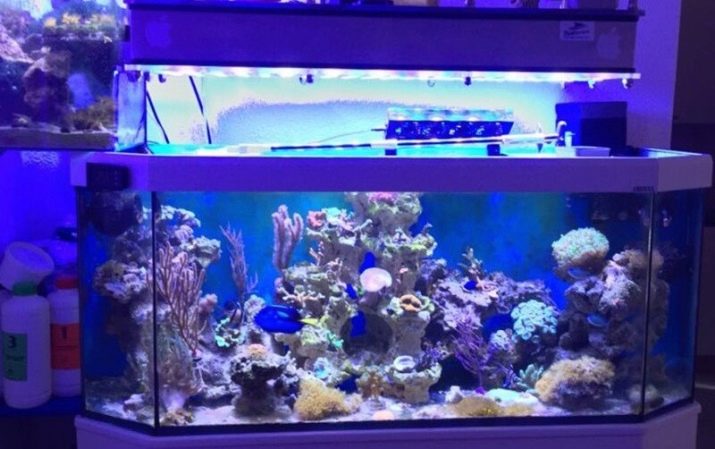
Where to install?
As a rule, the place of installation of the aquarium is determined long before its purchase. But when the tank with equipment arrived from the store, you should make sure that the "parking" of the future water area really does not hurt anyone, and the inhabitants of the home reservoir will be comfortable. The cabinet with the aquarium should be in a quiet, dark place, away from the TV screen, computer and music center. At the same time, there should be a lot of space around it so that the maintenance of the aquarium and the care of the inhabitants do not cause discomfort.
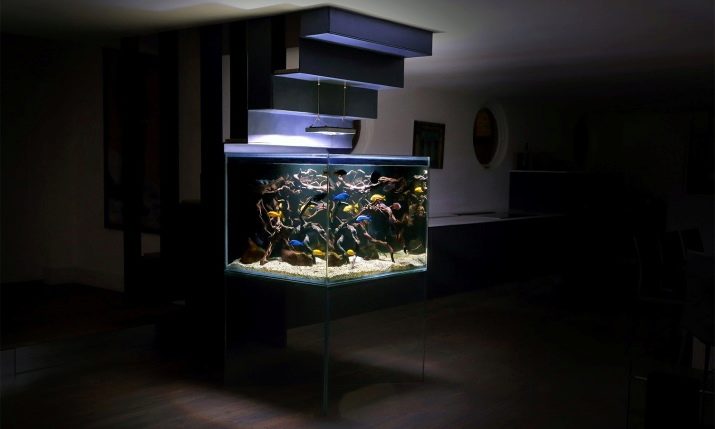
Ideally, a socket with a tee should be located next to the tank, through which light, heaters, filters will be connected.
If one is not near, you will have to pull the cord from the extension cord, which will create additional inconvenience. There are frequent cases when beginners try to put an aquarium in Feng Shui: in the northeast or south of the apartment for an influx of finances or on the east side to soften the tense home atmosphere.
If these parties meet the conditions for comfortable fish living, it is worth listening to them. But if there are sleeping places in the so-called favorable zones, for fish it is better to look for a place in the corridor or living room. After all, the operation of compressors and filters is never silent, and chronic lack of sleep does not contribute to peace.
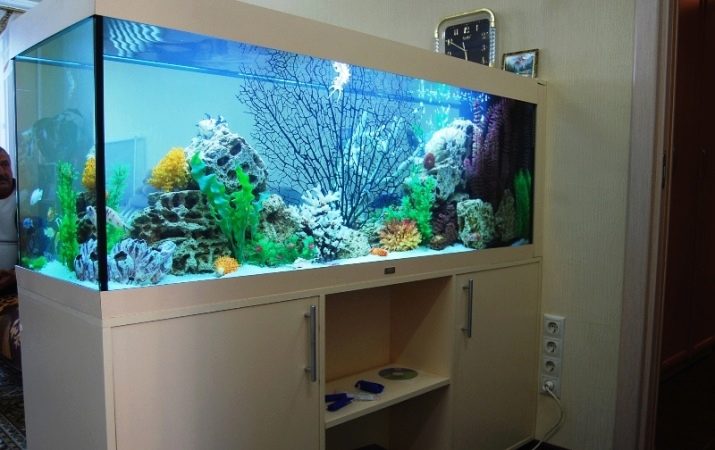
How many and what kind of fish can I keep?
There are many ways to calculate the number of fish for an aquarium of any size, but none of them is extremely accurate. Therefore, experts advise starting from the amount of water per specific individual. For instance, at least 50 liters are required for one diskus, 1.5 liters per individual for a cockerel. Small cichlids are populated in pairs at the rate of 40 liters for two. Malawian cichlids require 10 liters per individual. Overpopulation is not scary for them - on the contrary, they become less aggressive.
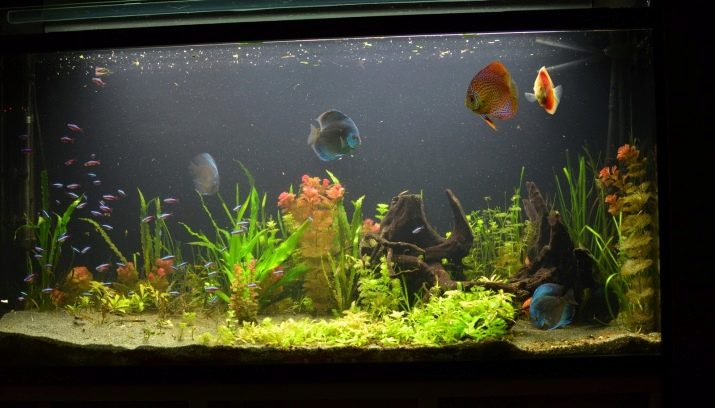
Goldfish, angelfish, gourami, zebrafish, Malabar require at least 30 liters per individual. There are no specific recommendations on the number of these fish - it all depends on the nature, behavior and habits of the specimens you like. Do not discount small and small fish. For example, neon, guppy, cardinal and parsing require only 1 liter per individual. Pecilia, thornsii, barbus and rhodostomus - one and a half, and the swordsman and mollies - 3-10 liters of water. For a flock, the volume of water will require less, and for one instance - at least five liters.
Bottom species of fish are not taken into account, but the capacity of the aquarium allows you to populate one large specimen or several related fish.
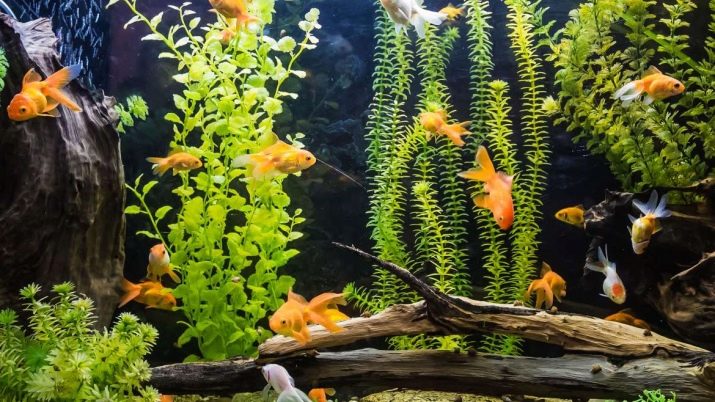
The dimensions of the tank allow you to visit predatory fish in the aquarium. This may be a poisonous sack-gill catfish, which feels great not only in the aquatic environment, but also on land: inside its body there are bags in which the fish stores water. One knife cichlid should account for at least 100-150 liters of water, since this hunter loves space and does not tolerate curious neighbors. The spotted Indian knife and white-apronotus are very aggressive and do not even tolerate representatives of their species. These predators should be settled at the rate of 200 liters per individual. A flock of pineapples or sliders of 4-5 individuals will require the entire volume of a 200-liter aquarium. Tetradon is a more compact predator - individual representatives occupy only one liter per individual.
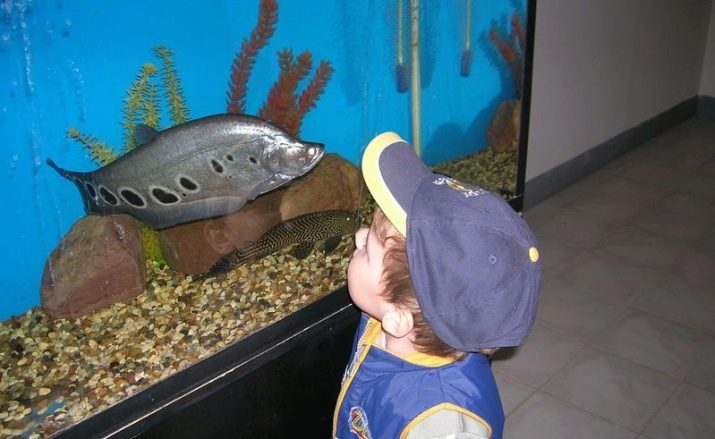
Exotic fish have always been of interest, however, the maintenance of predators is associated with certain difficulties: many species prefer live food in the form of fry, do not refuse chicken meat or beef, eat snails. As a result, the water becomes more polluted faster, and you will have to clean the aquarium more often. Another important point is the selection of the neighborhood.
Predators perceive small fish by default as prey. Therefore, for cohabitation with carnivorous breeds, it is necessary to select large non-aggressive individuals, or even to keep them in splendid isolation.
However, an aquarium with a single fish will not cause such interest as the container in which life is seething.
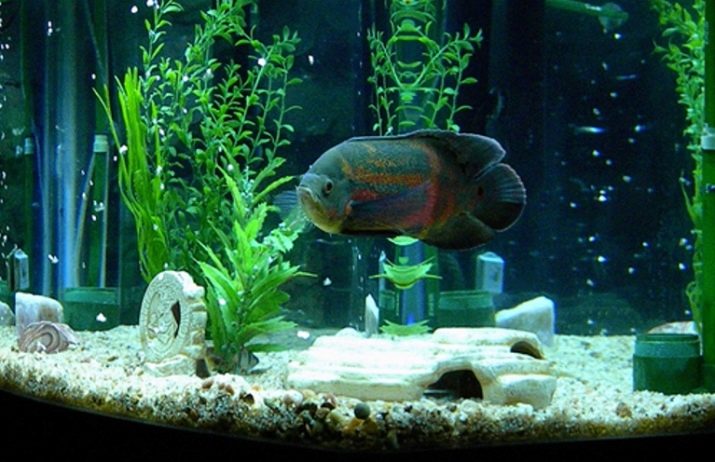
According to experienced aquarists, at home it is better to get two schools of small fish, two medium ones, a couple of large individuals (better than one species) and two catfish.
Of course, the selection of living creatures should be carried out taking into account the nature and behavioral characteristics. For example, the optimal combination is called the content of ordinary neon and zebrafish - two flocks of eight each. Then four larger fish are hooked to them - apistograms of ramirezi and a couple of gourami that grow with a palm wide. Inhabitants of the bottom are the catfish of ancistrus. It is possible to pick up any other population of the aquarium, but first you should consult with the seller about the nature of the specific individuals that you really want to put in your aquarium.
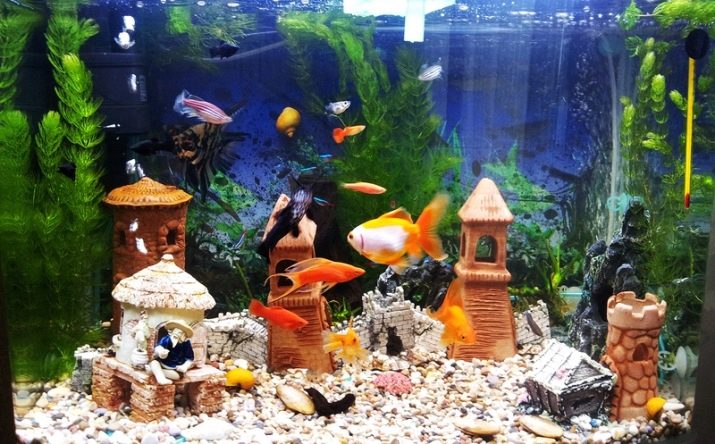
In order for a capacious capacity of 200 liters to become an elegant addition to the interior, it is important to follow the instructions for installing, buying and settling the aquarium, and then ensure proper care for its inhabitants. Then the corner of the underwater world will also be the subject of pride of the owner.
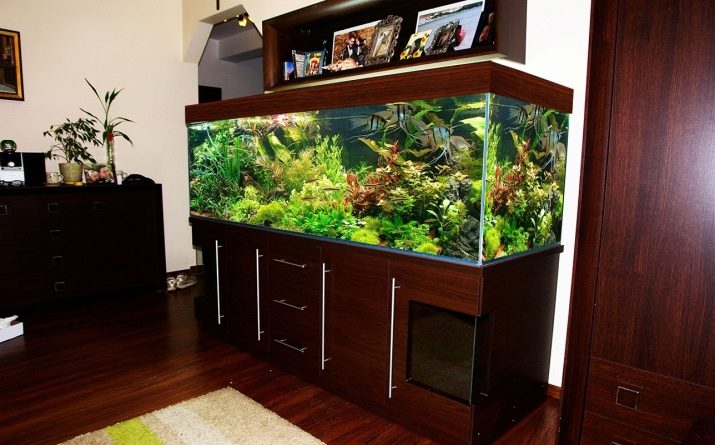
The features of the contents of a 200-liter aquarium can be found in the next video.
